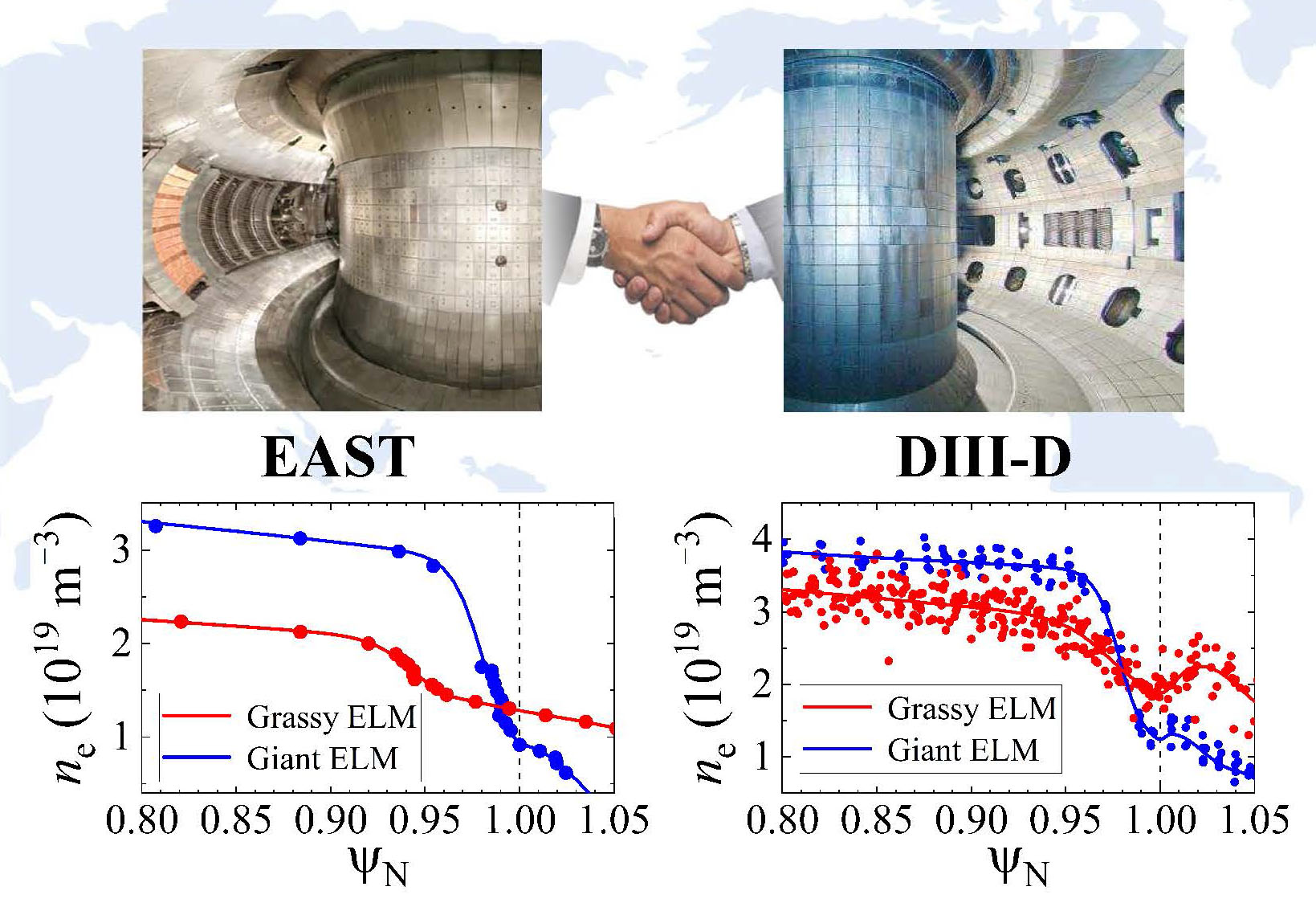
Experiments demonstrate “grassy ELM” regime with high heating power and confinement
Cooperative research between the DIII-D National Fusion Facility in USA and the Institute of Plasma Physics (ASIPP), the Hefei Institutes of Physical Science (HFIPS) in China has identified a key approach to creating plasma conditions that will be necessary for steady-state operation of ITER. This new approach shows promise in avoiding potential edge instabilities in the plasma that can pose increased plasma-material interaction challenges.
Plasma instabilities known as edge-localized modes (ELMs) are a challenge to stable operation of fusion reactors. Effective ELM control is particularly important in high-confinement, steady-state fusion plasmas such as ITER. The research at DIII-D and EAST found that maintaining high density at the edge of the plasma and a high density ratio between the pedestal bottom and top can reduce the severity of ELMs.
"Combining ELM control with high fusion performance will be critical for efficient operation of ITER and the power plants that come after it,” said Guosheng Xu. “These results are an important step toward practical fusion energy.”
One approach to ELM control has been creating plasma conditions in which ELMs may occur, but are much smaller. Known as “grassy” ELMs, these conditions have been achieved on other devices, but often under parameters that are not suitable for large, long pulse devices like ITER. The experiments on DIII-D demonstrated a grassy ELM regime at an ITER-relevant pedestal collisionality (V*e = 0.15) with high heating power (>13MW) and high energy confinement (H98y2 up to 1.5). Grassy ELM conditions also are especially suitable to efficient particle and heat exhaust from the tokamak – which passes through a device known as a divertor – as well as control of heavy ions that can interfere with the fusion reaction.
DIII-D is the largest magnetic fusion research facility in the U.S. and is operated by General Atomics (GA) as a national user facility for the DOE Office of Science.
Similar conditions have been observed on the Experimental Advanced Superconducting Tokamak (EAST) in Hefei, China, which shares some important design features with ITER. The compatibility of the high-performance grassy ELM regime with radiative divertor in a metal wall environment that will be needed on ITER has been demonstrated with innovative detachment feedback control techniques developed on EAST. The grassy ELM scenarios on EAST overlap those projected for ITER as well as the China Fusion Engineering Test Reactor (CFETR), a planned next-step device.
These new findings from DIII-D and EAST suggest a promising pathway toward addressing the challenges of maintaining high-performance fusion plasmas with mitigated ELMs in future devices such as ITER and CFETR.
This work was supported by National Natural Science Foundation of China under Grant No. U19A20113 and National Magnetic Confinement Fusion Energy R&D Program of China under Grant No. 2019YFE03030000 and US DOE under Contract Nos. DE-FC02-04ER54698 and DE-SC0010685.
Link to the paper: [1] Grassy ELM regime at low pedestal collisionality in high-power tokamak plasma
As for previous research, please refer to: [1] First Evidence of Local E×B Drift in the Divertor Influencing the Structure and Stability of Confined Plasma near the Edge of Fusion Devices
[2] Promising High-Confinement Regime for Steady-State Fusion
[3] Stationary high-performance grassy ELM regime in EAST
[4] Divertor impurity seeding with a new feedback control scheme for maintaining good core confinement in grassy-ELM H-mode regime with tungsten monoblock divertor in EAST

Cooperative research between DIII-D and EAST found that maintaining high density at the edge of the plasma and a high density ratio between the pedestal bottom and top can reduce the severity of ELMs. (Image by XU Guosheng )
Contact:
ZHAO Weiwei
Hefei Institutes of Physical Science (http://english.hf.cas.cn/)
Email: annyzhao@ipp.ac.cn